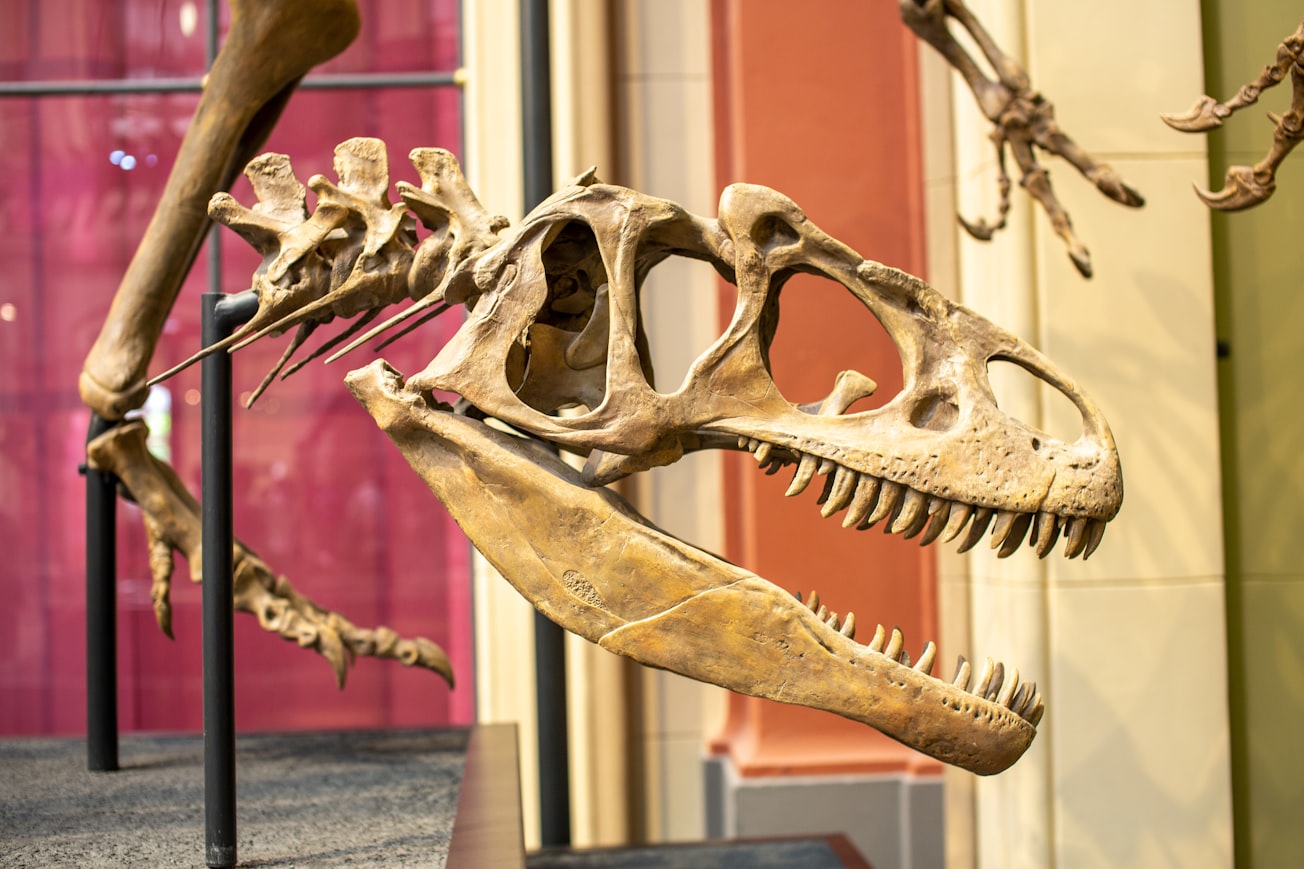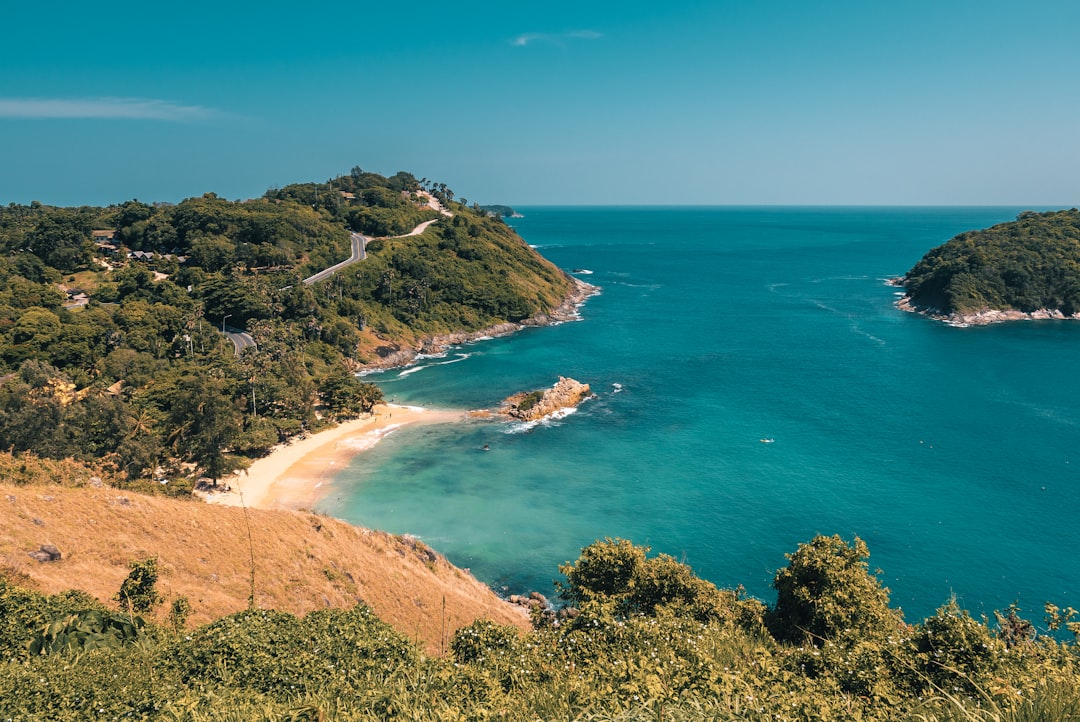What is it about?
This research demonstrates that large theropods such as Allosaurus could have evolved to subsist on sauropod carrion as their primary resource. Even when huntable prey was available to them, selection pressure favored the scavengers, while the predators suffered from lower fitness. So we think allosaurs probably waited until a bunch of sauropods died in the dry season, feasted on their carcasses, stored the fat in their tails, then waited until the next season to repeat the process. This makes sense logically too, because a single sauropod carcass had enough calories to sustain 25 or so allosaurs for weeks or even months, and sauropods were often the most abundant dinosaurs in the environment. So, natural mortality from these giants probably made carrion abundant enough that big theropods could survive on them, even if they hunted rarely. Plus there weren't any scavenger pterosaurs or scavenger birds around back then, so big theropods were the only animals in the environment capable of exploiting sauropod-falls.
Featured Image

Photo by Adam Ford on Unsplash
Why is it important?
Almost no research about sauropod carrion, as a consumptive ecological resource, has really ever been done. This is strange, because they were as large as modern whales. Whale carcasses are widely recognized as valuable targets for large carnivores whenever they are present. It stands to reason that sauropod carcasses were probably very lucrative feeding opportunities as well, simply because of their similar sizes. Agent-based modeling in this research confirms that sauropod dominated systems, especially those with seasonal die-offs, probably influenced the fundamental evolutionary trajectory of carnosaurs. Made them into opportunistic scavengers. Just because of fundamental supply, demand, and relative effort phenomena.
Perspectives
This explanation is exciting because it has never been suggested before, and it potentially answers some of the longest-running questions in paleoecology. They are: Why did sauropods get so big? And why haven't sauropod analogues ever evolved in mammals, or even other reptiles? I think the answer lies in 2 special post-asteroid things. One is grass. Dinosaurs didn't have grass plains or big lawns. The easiest and most abundant food for herbivores was usually big conifers instead. Sauropods didn't have a lot of options, so they probably evolved to specialize on high browse. Eating trees. They could have spent several hours standing at the base of a conifer, stripping its branches, before moving to an adjacent tree to repeat the process, without expending much energy on locomotion. So it is unlikely that sauropods could have developed a feeding mode that allowed them to stay in one place for extended periods if they were under constant predatory pressure during a majority of their lives. Prey animals typically abandon feeding opportunities to avoid the risk of predator exposure. Sauropods were slow, and were incapable of doing this: if they felt threatened, they would have been unable to flee quickly even as adolescents, so their survival probably was not dependent on their ability to avoid predators, except as hatchlings and young juveniles. Instead, the ability to exploit a stationary feeding mode suggests that sauropods were able to feed undisturbed for most of their lives, and this would be difficult to explain if the environment was saturated with hunters that were able to disperse them. Sauropod-falls during the dry season likely provided enough calories such that theropods were not forced to hunt as often as today’s large prey specialists, which potentially explains how the two groups of dinosaurs were linked evolutionarily. It is possible that, broadly speaking, sauropod gigantism, via natural-attrition carrion, rewarded the most efficient scavengers, and in doing so, relaxed predation pressure on living sauropods which freed them to evolve progressively increasing size as semi-stationary browsers, in a feedback loop that perpetuated each lineage convergently. Mammalian herbivores have evolved to graze on grass. In order to do this, they just need to lower their heads to the ground and eat. Grassy plains are typically spread out over wide areas, so mammals need to move continually to eat. Today's herbivores also need to escape from predators, too, so they evolved agility, speed, and mobility, which also forces them to remain small enough to do this effectively. In contrast, sauropod dinosaurs, particularly the massive ones weighing over 20 tonnes, were slow and unable to flee from threats for most of their entire lives. The other thing about this, is that dinosaur brains were so far away from their limbs, that the time for a nerve impulse to reach the legs was probably much longer than in modern mammals that need to react to obstacles quickly. I doubt they did much mountain climbing. But mammals had 2 pressures that forced them to move around and stay smaller than sauropods - widespread grasses and predators. Furthermore, the introduction of aerial scavengers in modern ecosystems creates additional competition for carrion resources, but aerial scavengers did not exist in the Late Jurassic Period, so big theropods didn't need to compete with them. So if there is a general recipe for sauropods to evolve, I think it would be 1. Little to no grazing/low browse resources; This force them to exploit tree branches, and evolve to progressively increase efficiency at this. Longer necks, bigger bodies. 2. No significant threat from predators. Sauropods needed the freedom to remain stationary for long periods of time while feeding, because they ate trees. If active obligate predators were everywhere in the environment, pre-sauropods would have evolved to escape from them, and this would necessarily involve some kind of agile locomotion. And it would also have precluded semi-stationary high browsers from evolving. As a result , local carnivores would have benefited ENORMOUSLY from seasonal die offs. The carcasses of sauropods were huge - just one had enough calories to sustain 25-30 allosaurs for weeks or even months. And there were so many of them. So many. So they didn't need to hunt, which allowed sauropods to get bigger and less mobile over time.
Cameron Pahl
Portland State University
Read the Original
This page is a summary of: Big boned: How fat storage and other adaptations influenced large theropod foraging ecology, PLoS ONE, November 2023, PLOS,
DOI: 10.1371/journal.pone.0290459.
You can read the full text:
Contributors
The following have contributed to this page










